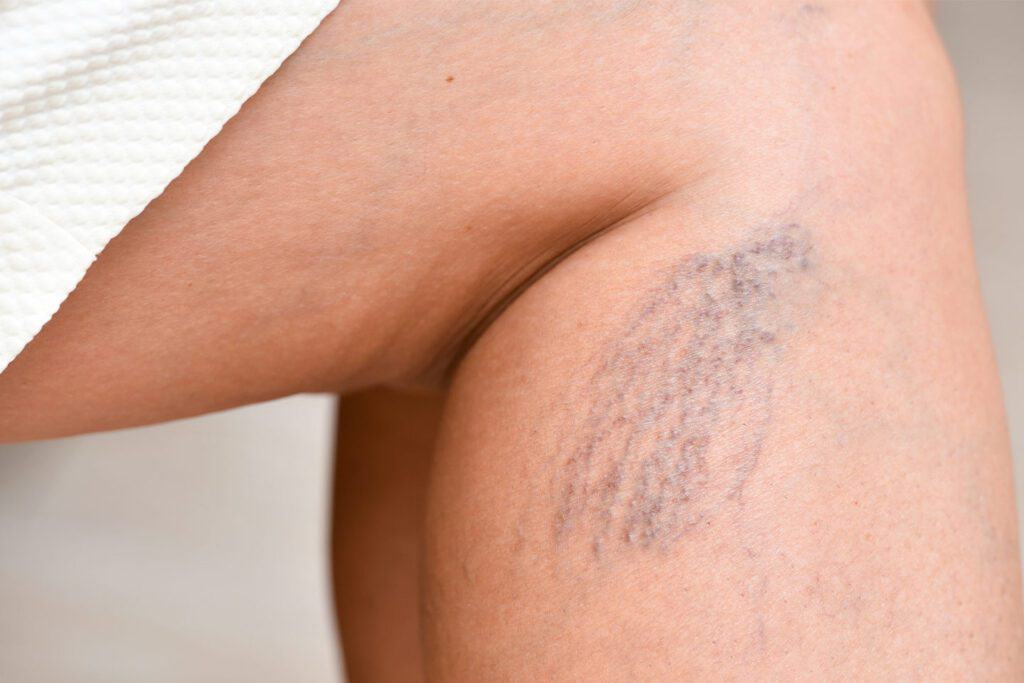Reticular veins are another type of vein that is visible below your skin that develop as a result of valve dysfunction in the veins. These veins are larger than spider or telangiectasia veins, but don’t bulge out like varicose veins. These veins may cause some pain and discomfort.
Initially, they may appear as bluish or greenish veins beneath the skin’s surface, often in a network-like pattern. Over time, reticular veins can enlarge and become more prominent, potentially causing discomfort, itching, or aching sensations in the legs.

Factors such as genetics, hormonal changes, obesity, and prolonged standing can contribute to their progression. Though typically not as severe as varicose veins, monitoring and early intervention through lifestyle modifications or medical treatments may help manage their development.
Early intervention and proactive management can help prevent reticular veins from worsening and improve overall vein health.
Reticular veins are small, bluish or greenish veins that typically appear just beneath the surface of the skin, often on the legs. While they are larger than spider veins, they are smaller than varicose veins. One of the key differences between reticular veins vs spider veins is that reticular veins often act as feeder veins that contribute to the development of spider veins.
In most cases, reticular veins are not considered dangerous. However, they can cause discomfort, aching, or itching—especially after standing for long periods. If you experience symptoms or are concerned about how these veins affect circulation, it’s a good idea to consult a vascular specialist. Treating them early can also prevent them from worsening.
Reticular vein treatment typically involves minimally invasive procedures such as sclerotherapy or laser therapy. These treatments target the affected veins and help reduce their appearance and any associated discomfort. At the Vascular Institute of Chattanooga, we personalize each treatment plan to ensure safe and effective results.
Reticular veins in the legs are especially common due to the increased pressure from standing or walking, which can weaken vein walls over time. Genetics, hormonal changes, and lifestyle factors can also contribute to their development.
Call now to book an appointment.
Conveniently located near Northgate Mall.